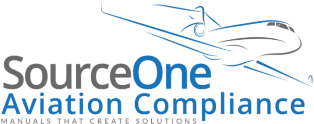GNSS LPV/APV & VNAV IAP Operations Manual / Module
GNSS LPV/APV with SBAS & VNAV IAP:
FAA LOA/OpSpec C052 & C073 Applications include the following:
- Operations Manual with Operational Procedures and Policy
- FAA LOA/OpSpec C052 & C073 Applications for LPV/APV & VNAV IAP
- Supporting Aircraft & Flight Crew Documents
- Description of Navigation Systems for LPV/APV with SBAS & VNAV IAP
- Support during FAA approval process.
- Manual is revised and newly issued every 24-months at a cost-effective price.
GNSS LPV/APV with SBAS & VNAV IAP Operations Manual / Module is over 35 pages and includes the following:
- Ultra high quality in color
- Table of Contents/Control Page
- Operator Information
- Highlights of Change
- Revision Page
- Introduction
- Abbreviations and Acronyms
- References
- Overview of LPV/APV with SBAS Operations
- Overview of VNAV IAP Operations
- Flight Crew Procedures
- Temporary Revisions are included at no addition charge as necessary
- Digital PDC Copy for PC, EFB, Tablet, or IPAD with a 1-time setup fee per Client for electronic document Access on Cloud Server for Storage 24/7/365
- Company Logo added to Manual Cover (Client provided)
- If Requested 1 Custom Spiral Bound Binder with Lexan Cover and High Quality Color Manual (FAA copy is Digital black & white)
Total Cost is $750.00 USD
Definition
Localizer Performance with Vertical Guidance
LPV is defined as an Approach with Vertical Guidance (APV); that is, an instrument approach based on a navigation system that is not required to meet the precision approach standards of ICAO Annex 10 but that provides both course and glidepath deviation information.
Description
RNAV GNSS approaches that can be conducted down to LPV minima are characterised by a coded Final Approach Segment (FAS) data block. The FAS is defined laterally by the Flight Path Alignment Point (FPAP) and Landing Threshold Point/Fictitious Threshold Point (LTP/FTP), in essence, an accurately defined runway threshold location and an equally accurate position on the extended centreline. It is defined vertically by the Threshold Crossing Height (TCH) and Glide Path Angle (GPA). The FAS of an LPV approach may be intercepted by an approach transition, such as Precision-Area Navigation (P-RNAV), the initial and intermediate segments of an RNAV or RNP Approach, or via radar vectoring to intercept the extended FAS.
To provide the necessary accuracy to conduct an approach to LPV minima, the GNSS signal must be refined by a Satellite Based Augmentation System (SBAS) system, be it the Wide Area Augmentation System (WAAS), the European Geostationary Navigation Overlay Service (EGNOS) or another space based augmentation system. These extremely accurate augmentation systems can provide the required lateral and vertical approach guidance down to a decision altitude (DA) with provision for a slight “duck under” in the event that a Go Around is required. As in an ILS, the angular guidance of an LPV approach becomes narrower and more sensitive as the aircraft approaches the runway. To enable use of LPV minima, the aircraft must be fitted with both an LPV capable Flight Management System (FMS) and a compatible SBAS receiver.
